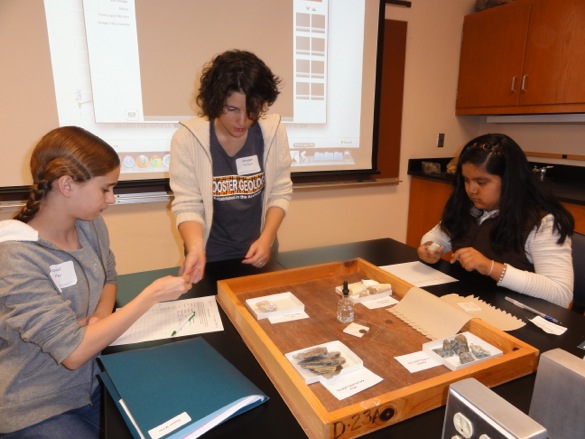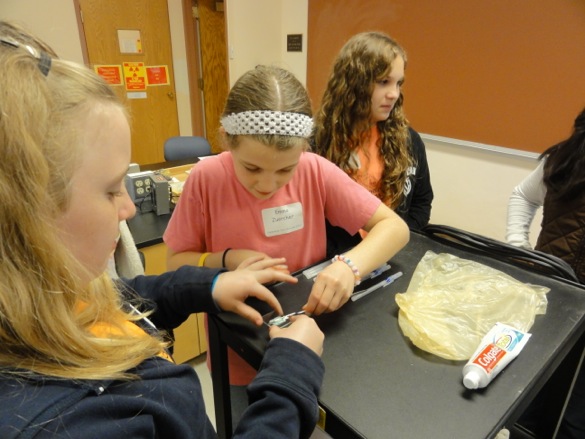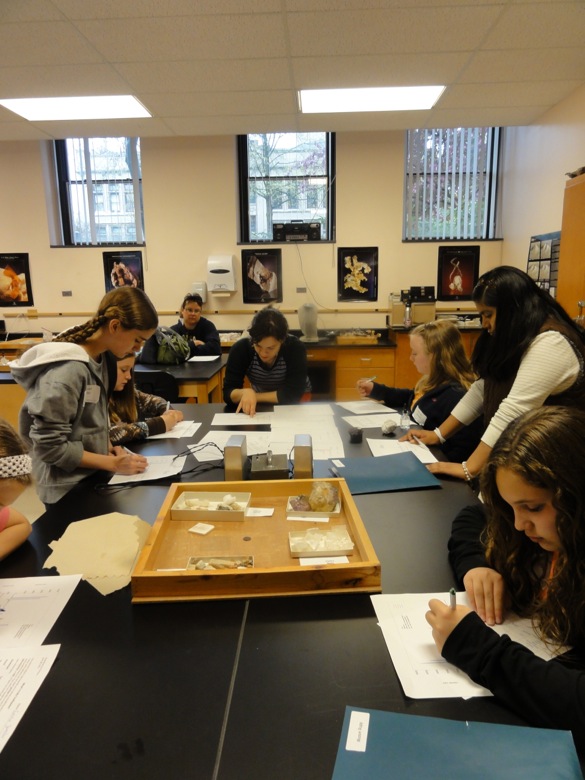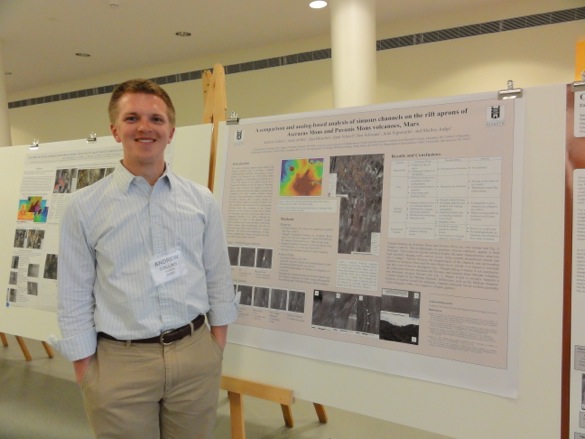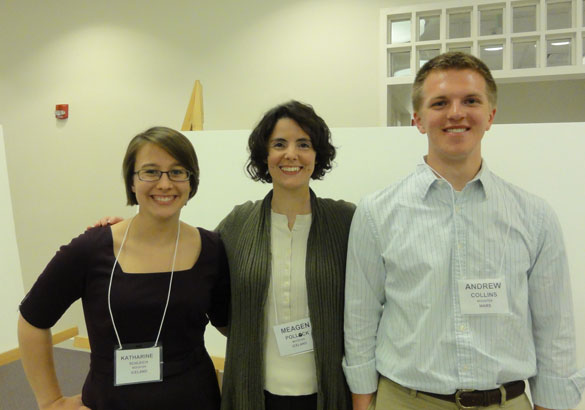 This weathered and encrusted shell was pulled from a round hole bored in a Pleistocene reef (about 125,000 years old) exposed on San Salvador Island, The Bahamas. It is Coralliophaga coralliophaga (Gmelin 1791), a derived venerid bivalve (a type of heterodont, meaning that it has cardinal and lateral articulating teeth inside its valves.) I collected it back in 1991 while studying an inter-reef unconformity that recorded a drop and rise of sea level (Wilson et al., 1998; Thompson et al., 2011).
This weathered and encrusted shell was pulled from a round hole bored in a Pleistocene reef (about 125,000 years old) exposed on San Salvador Island, The Bahamas. It is Coralliophaga coralliophaga (Gmelin 1791), a derived venerid bivalve (a type of heterodont, meaning that it has cardinal and lateral articulating teeth inside its valves.) I collected it back in 1991 while studying an inter-reef unconformity that recorded a drop and rise of sea level (Wilson et al., 1998; Thompson et al., 2011).
Coralliophaga means “coral eater”, which is a bit of a bum rap for this clam. It is found inside borings in coral, true enough, but those holes were drilled by some other types of clams. C. coralliophaga only occupies the holes after the original dweller is dead and gone (Morton, 1980). We call this kind of behavior “nestling“, which seems a polite way of saying “squatting”. These bivalves grew to adulthood in these cavities protected from most predators as they filtered the seawater for food.
 The trace fossil Gastrochaenolites torpedo (the elongate borings) with a nestling (and broken) C. coralliophaga in the lower right corner.
The trace fossil Gastrochaenolites torpedo (the elongate borings) with a nestling (and broken) C. coralliophaga in the lower right corner.
The posterior ends of these shells are encrusted by a variety of calcareous algae and other organisms during life, so they look a bit rough on their outsides. Often the encrustations are so thick that the shells are difficult to extract from the holes, so getting a nice complete shell like the one at the top of this entry is rare.
 C. coralliophaga was named by Johann Friedrich Gmelin (1748–1804) in 1791. Gmelin was an accomplished naturalist from Tübingen, Germany. He received an MD degree in 1769, with his father (Philipp Gmelin) as his advisor. He taught at Tübingen and the University of Göttingen, writing many textbooks in fields from chemistry through botany. He published the 13th edition of Systema Naturae by Carolus Linnaeus, inserting his new taxa in the text, including our new friend Coralliophaga coralliophaga.
C. coralliophaga was named by Johann Friedrich Gmelin (1748–1804) in 1791. Gmelin was an accomplished naturalist from Tübingen, Germany. He received an MD degree in 1769, with his father (Philipp Gmelin) as his advisor. He taught at Tübingen and the University of Göttingen, writing many textbooks in fields from chemistry through botany. He published the 13th edition of Systema Naturae by Carolus Linnaeus, inserting his new taxa in the text, including our new friend Coralliophaga coralliophaga.
References:
Gmelin, J.F. 1791, in Linnaeus, C. Systema Naturae per Regna Tria Naturae, Secundum Classes, Ordines, Genera, Species, cum Characteribus, Differentiis, Synonymis, Locis. 13th Edition, Lyon : J.B. Delamolliere Tom.
Morton, B. 1980. Some aspects of the biology and functional morphology of Coralliophaga (Coralliophaga) coralliophaga (Gmelin, 1791) (Bivalvia: Arcticacea): a coral-associated nestler in Hong Kong. pp. 311-330, in: Morton, B., The Malacofauna of Hong Kong and southern China. Proceedings of the First International Workshop on the Malacofauna of Hong Kong and Southern China, Hong Kong, 1977. Hong Kong: Hong Kong University Press.
Thompson, W.G., Curran, H.A., Wilson, M.A. and White, B. 2011. Sea-level oscillations during the Last Interglacial highstand recorded by Bahamas corals. Nature Geoscience 4: 684–687.
Wilson, M.A., Curran, H.A. and White, B. 1998. Paleontological evidence of a brief global sea-level event during the last interglacial. Lethaia 31: 241-250.
 FAIRBORN, OHIO–I actually used to brag about the great weather on my class field trips. The hubris! Today Shelley Judge and I took our combined Sedimentology & Stratigraphy and Structural Geology classes to Oakes Park Quarry near Dayton for a field trip. (Location = N39.81401°, W083.98374°.) We planned to describe and measure the exposure there of the Brassfield Formation, and then assess the joint fabric and the direction of glacial grooves on its top surface. I took three students there last week to test the concept. Since this is the last weekend of the semester, there was no do-over, so we went rain or shine.
FAIRBORN, OHIO–I actually used to brag about the great weather on my class field trips. The hubris! Today Shelley Judge and I took our combined Sedimentology & Stratigraphy and Structural Geology classes to Oakes Park Quarry near Dayton for a field trip. (Location = N39.81401°, W083.98374°.) We planned to describe and measure the exposure there of the Brassfield Formation, and then assess the joint fabric and the direction of glacial grooves on its top surface. I took three students there last week to test the concept. Since this is the last weekend of the semester, there was no do-over, so we went rain or shine.

















